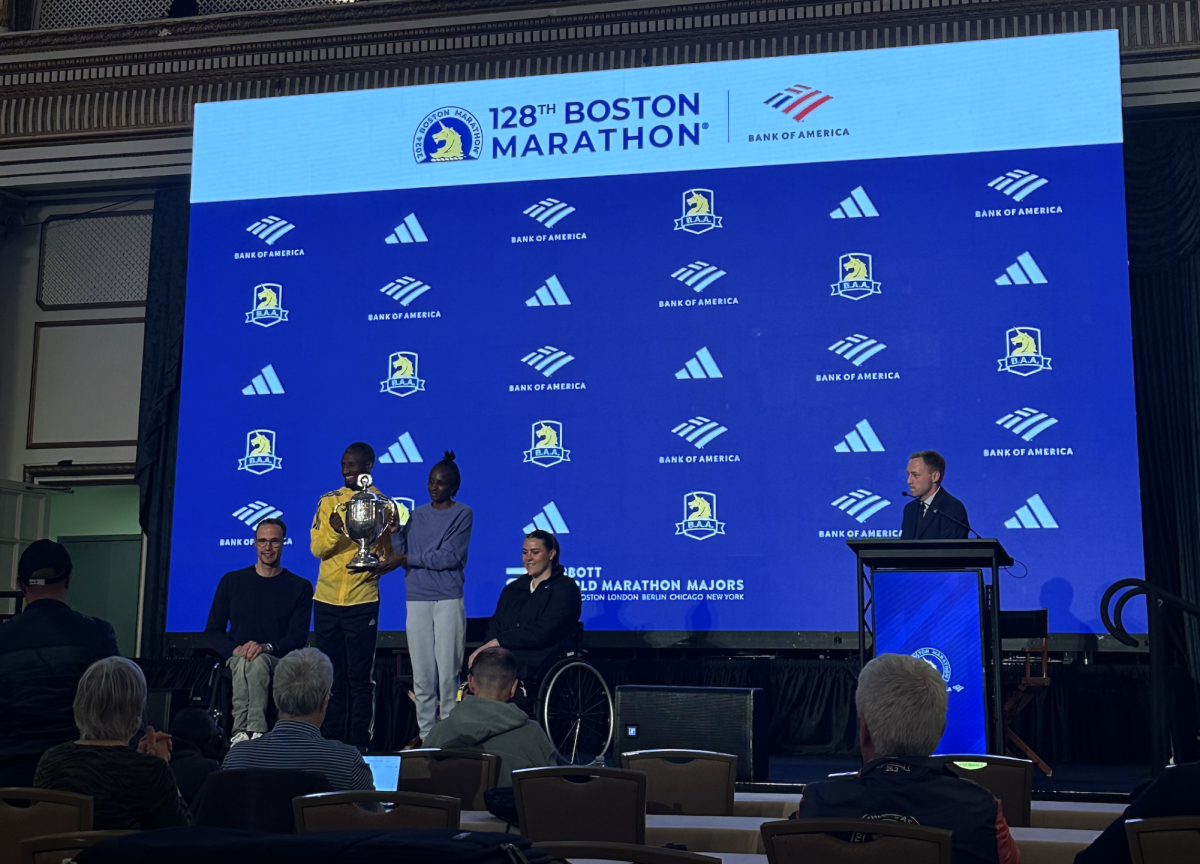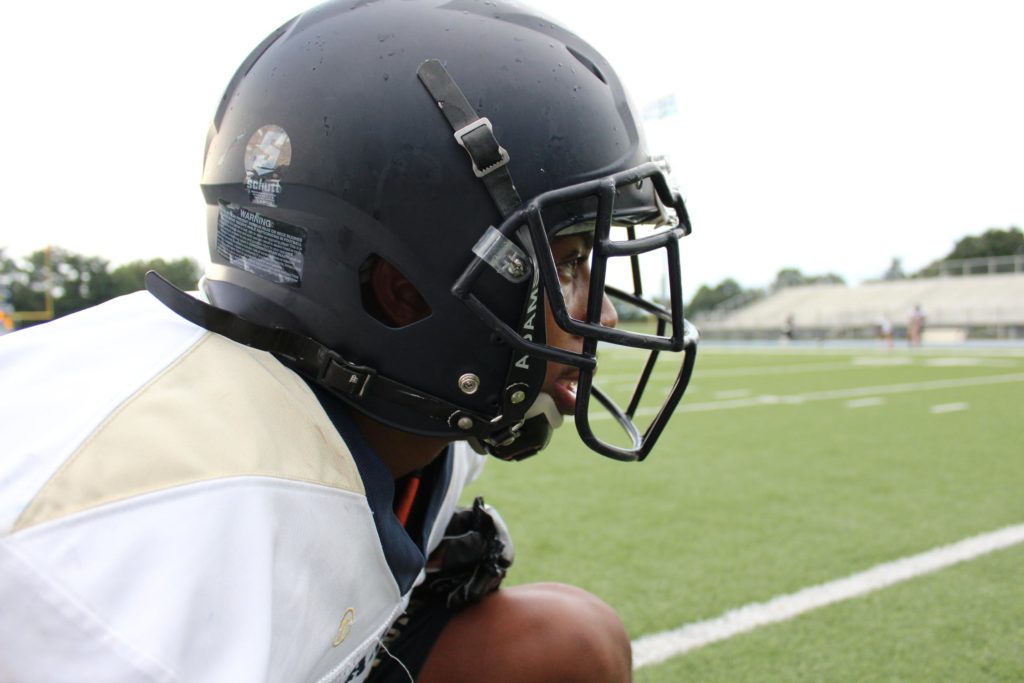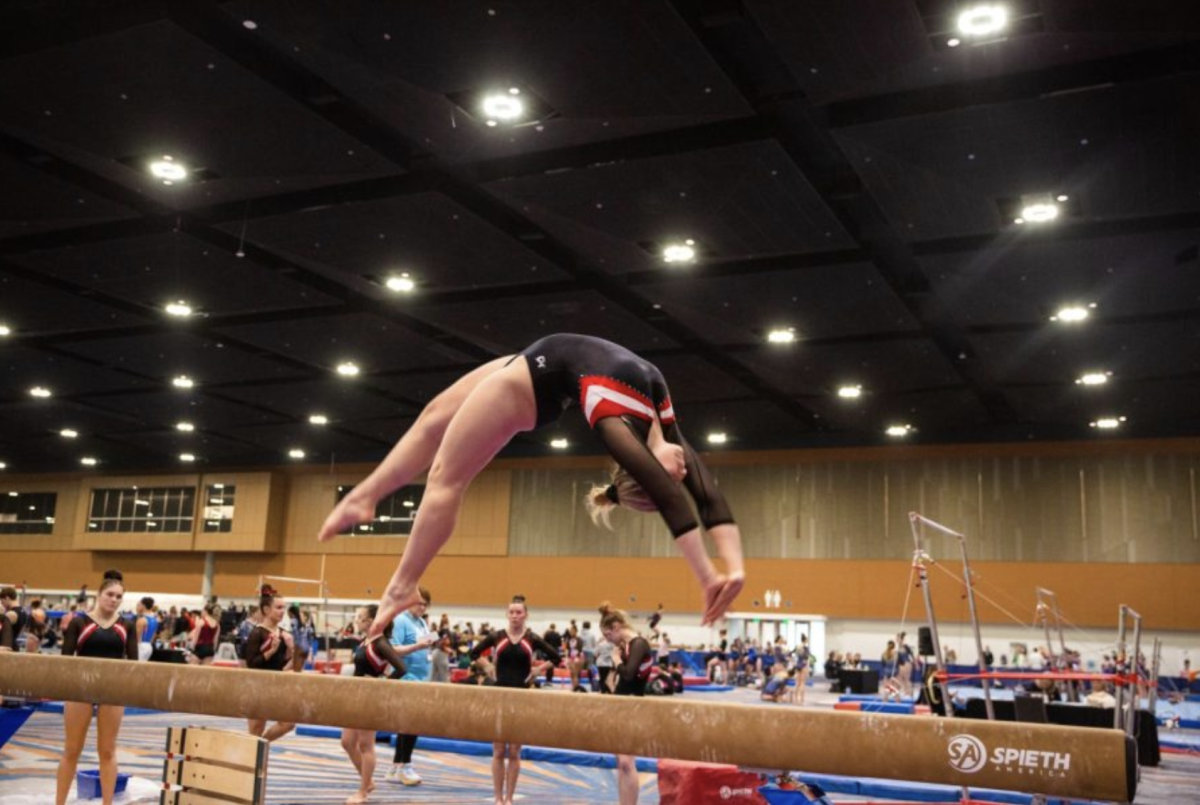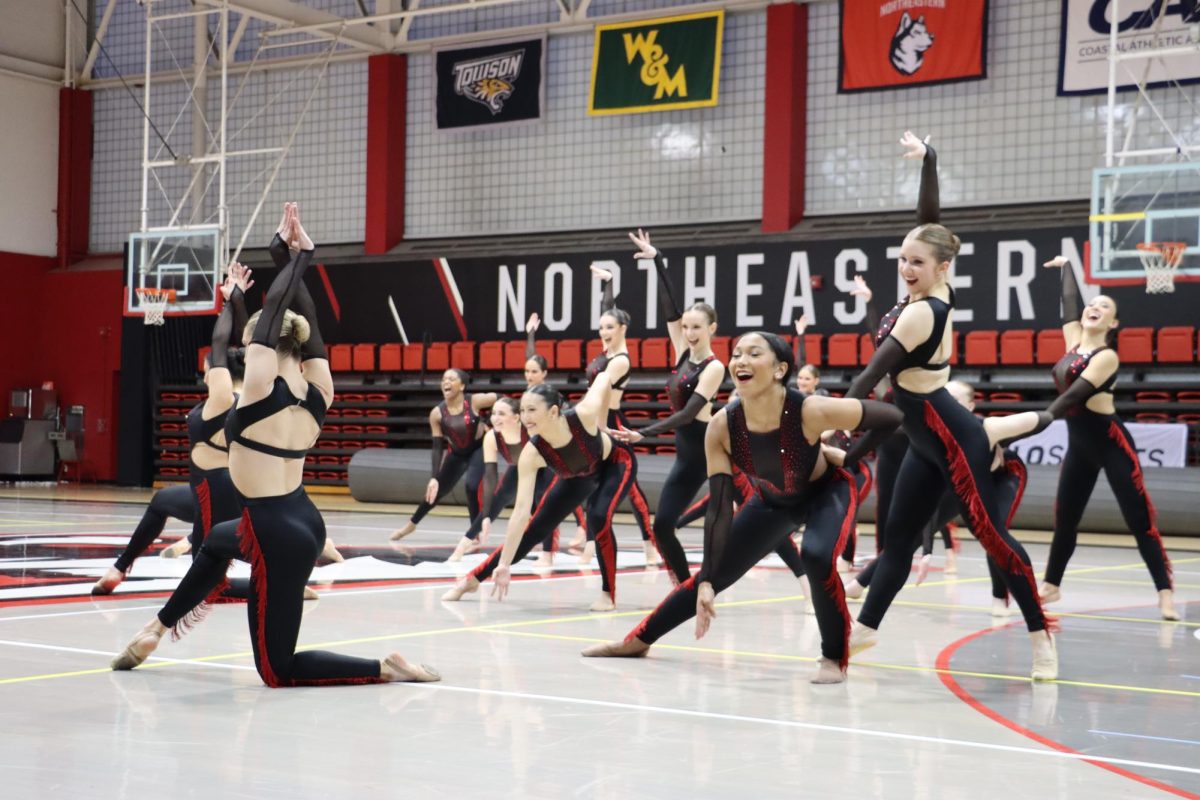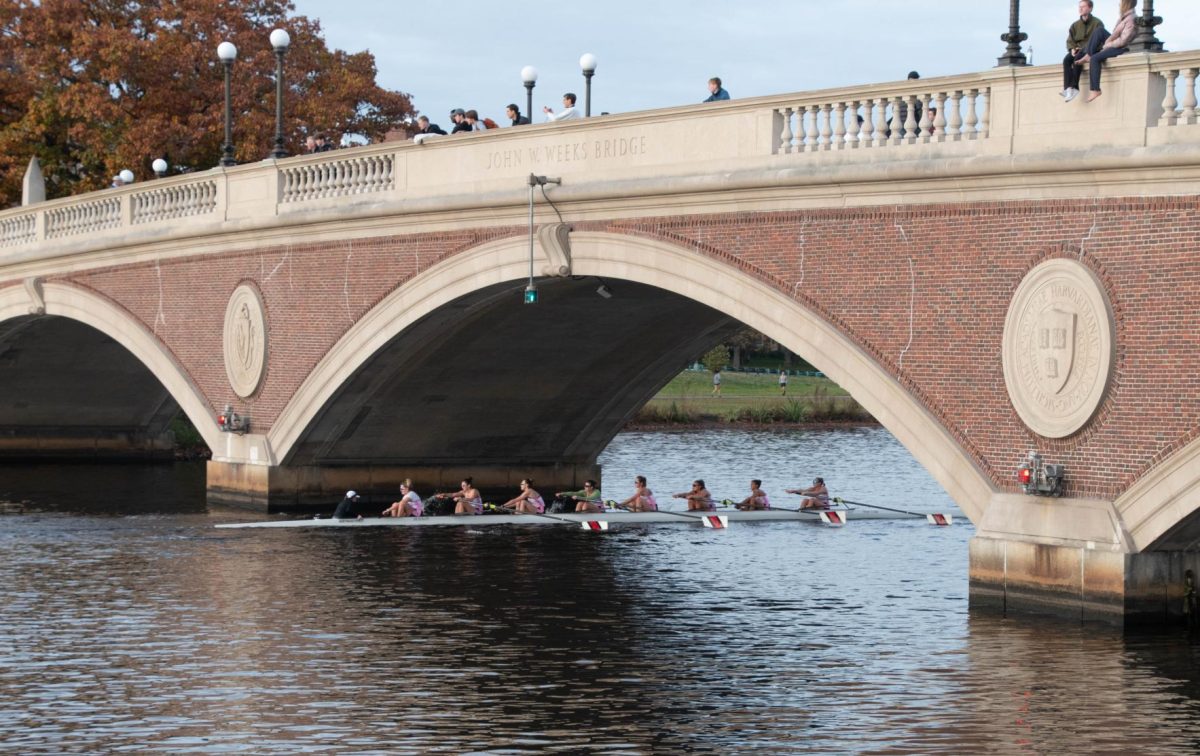By Milton Posner, news correspondent
It’s a frigid, windy, overcast March day in South Boston, and Eric Manning is hard at work. He’s the president of South Boston Pop Warner, and his preparations for the football season are already underway.
Ducking into the equipment shed to avoid the chilling wind gusts, he stands amid a clutter of footballs, jerseys and trophies. When asked about the head injuries that have become a contentious issue for the sport, he’s quick to mention his 9-year-old son, Eric Jr.
“The most concussed position on the field is the center on the offensive line,” he observed. “My son’s my center. If I wasn’t confident of the way we’re teaching the kids, he would not be playing that position.”
Professional football’s head trauma problem has generated extensive media coverage and research efforts. Chief among the long-term health risks of professional football is chronic traumatic encephalopathy, or CTE, a progressive neurodegenerative disease that results from repeated head injuries. Other long-term brain diseases, including dementia, have been observed in former football players as well.
Children are suffering the same head injuries. More than 2.3 million American children play youth football, easily dwarfing the college and professional ranks in number. Youth football includes middle and high school teams, as well as youth leagues like Pop Warner and American Youth Football.
Unlike most professional players, children’s brains are still in critical stages of development. A 2015 Neurology study found that those who began playing before age 12 “demonstrated significantly greater impairment on objective measures of executive functioning, immediate and delayed recall, and estimated verbal IQ” than those who began after age 12. A 2016 study in the medical journal Radiology found that even non-concussive head impacts could adversely affect white matter–the brain’s paler tissue, consisting mainly of nerve fibers. And in 2017, Boston University’s CTE Center concluded that a younger age-of-first-exposure to football was associated with “increased odds for… impairments in behavioral regulation, apathy, executive function, and elevated depression.”
However, most of the relevant scientific literature speaks of links and associations, not causation. Much of it awaits replication and further study. Stefan Duma, an engineering professor at the Virginia Tech-Wake Forest School of Biomedical Engineering and Sciences and a member of Pop Warner’s 11-person Medical Advisory Committee, urges careful consideration of existing data and the need for more study.
“What we don’t know and what we’re just starting to learn is how the youth brain responds to impacts, differences in how we might evaluate those and what the recovery time might be,” he observed. “We should be careful not to over-interpret. You have to look at what the paper does and doesn’t prove.”
Duma is working with other researchers on a five-year study funded by the National Institutes of Health. He hopes that the study, which examines six youth football teams using instrumentation and neuropsychological tests, will provide the public with more of the information it needs to decide on youth football participation.
But the public isn’t waiting.
Youth football participation plummeted in recent years, with parents often citing head trauma concerns as justification for pulling their children out. The number of high school players dropped by about 25,000 for the 2016-17 season. Enrollment among 6-to-14-year-olds plummeted by more than 800,000 between 2010 and 2015. During the same period, flag football participation rose in the same age group, reaching 1.1 million in 2015. This, along with public opinion polls, indicates that head injury concerns are driving the enrollment falloff.
But some claim that football, while deserving of criticism, is taken out of context.
“I think football has been unfairly targeted when it comes to concussions,” remarked Paul Sobolewski, head football coach at Boston’s Cathedral High School. “I try to educate parents that kids can get hurt in any sport that they play.”
There is ambiguity concerning which sport at which level played by which gender has the highest incidence of concussion, with hockey, rugby and soccer cited often. However, the large number of youth football participants, combined with the sport’s popularity at the collegiate and professional levels, has focused the spotlight squarely on football.
That spotlight extends past enrollment figures and to the courtroom. In 2016, Pop Warner settled a lawsuit brought by the mother of Joseph Chernach; her son, a former Pop Warner athlete, killed himself in 2012 at the age of 25. The suit argued that post-concussion syndrome affected his cognition, behavior, and mood and that his suicide was the “natural and probable consequence” of the brain damage he suffered playing football.
In September 2016, Kimberly Archie and Jo Cornell filed a lawsuit on behalf of their sons, who both died in their mid 20s – one from suicide, the other from a motorcycle accident. Both had played Pop Warner youth football and were diagnosed with CTE after death.
The suit accuses Pop Warner, USA Football, and the National Operating Committee on Standards for Athletic Equipment of negligence, fraud, fraudulent concealment, negligent misrepresentation and deceptive business practices. It claims that the defendants misled parents and athletes regarding safety and that claims of head injury reduction resulting from USA Football’s Heads Up program had been overstated. The lawsuit seeks class-action status, trying to include all Pop Warner participants and those who enrolled them from 1997 to the present. In October 2017, a California judge allowed the lawsuit to proceed.
“Hopefully we are successful in having changes to the game to make it safer for young boys,” Jo Cornell said earlier this year. “It is our opportunity to have justice on behalf of our sons.”
Besides fighting off lawsuits, Pop Warner has made a number of policy changes during the last decade, many of which could be indicative of youth football’s future.
In 2010, Pop Warner instituted a concussion policy modeled after Washington’s Lystedt Law. Any player suspected to have a head injury is removed from play and cannot return until they receive written clearance from a medical professional.
Once that happens, there is an additional process, one that Joe Panniello strongly believes in. He’s the president of Pop Warner of Eastern Massachusetts, and his region encompasses 32 local organizations, over 1,000 coaches and tens of thousands of players.
“The first day they come back, they’re going to do some light exercise, maybe five or ten minutes,” he said. “If everything appears OK, the next practice they’ll have more activities, maybe sprints instead of just a jog. The next day they have heavier activities, but no contact. Step four would be allowed to come back to practice.
“If they fail any one of these, they need another clearance from the doctor.”
Anthony Mejia, Paul Sobolewski’s 17-year-old quarterback at Cathedral High School, describes a concussion protocol that resembles a garden-variety sobriety test, complete with left-to-right finger tracking and walking in a straight line.
Addressing the way kids practice and tackle is another pillar of reducing head trauma. Stefan Duma co-authored a study in 2016 in the Journal of Neurosurgery that concluded “a substantial reduction in high-magnitude impacts in youth football could be attained by limiting the amount of contact in practice.”
Pop Warner has limited the percentage of practice time that coaches can devote to contact drills, lowering it to 33 percent in 2012 before dropping it to 25 percent in 2016. Coaches have also emphasized proper tackling technique, something Anthony Mejia has experienced despite playing quarterback.
“It should be regulated that you teach kids how to hit properly,” he said. “Get low, put your head across their body, and drive through [with the shoulder]. If your head isn’t across his body, it means your head is into his body, and that means more impact stress on your neck and your head.”
Pop Warner has even experimented with rule changes. In 2016, it eliminated kickoffs for the 5-10 age group. At the start of each half and after each score, the ball is placed at the 35-yard line, reducing full-speed, head-on contact.
“I think it’s been a positive change,” Panniello said. “I’m hoping they expand that [to the upper levels]; I know they’re looking at that.”
But perhaps the most important, and definitely the most touted, step Pop Warner has taken is the 2013 adoption of Heads Up, a USA Football program that strives to reduce head injuries. It emphasizes concussion protocol, properly fitting equipment, tackling with the shoulders instead of the head, and increased use of the hands in blocking. Pop Warner requires its coaches to be certified through Heads Up.
“I get a copy from USA Football of everybody in my conference who has passed the test,” said Panniello, himself a USA Football member. “We check the rosters against that list to make sure everybody has been certified.”
In addition, while regional Pop Warner heads like Panniello cannot loosen safety regulations, they can make them tougher.
Research on the effects of new programs, techniques and rule changes is difficult given their recent implementation, so their effectiveness hasn’t been determined. Pop Warner and USA Football have been quick to cite their innovations as successful and have used them to assuage the fears of parents and young players, even in the absence of verifiable statistics.
Changes in rules and techniques in youth football can impact the game’s higher levels as well. The NFL Players Association estimates that between 60 and 70 percent of NFL players participated in Pop Warner as children. The legacy that youth instruction and management can have isn’t lost on Joe Panniello, who remarked that “the rules have to change at the lower level first.”
But not everyone is enamored with the changes.
“Some coaches have been asked not to come back for not following the rules,” Panniello said. “It’s usually the guys who have been around for 20 years; they’re set in their ways. They’re going to tell you how many times they’ve won, but it doesn’t matter. It’s not about winning, it’s about safety.”
All of the people quoted in this story claimed that while completely safe football is impossible, we must continue to innovate and re-educate to reduce the problem. They know the good it can do when done right and that safe football is not just possible, but essential.
“It teaches kids life lessons that make them better people. It teaches youth to work together to get things done,” Joe Panniello said. “They get knocked down; it teaches them to get back up and be a stronger person.”
Such is the world in which Eric Manning Jr. plays his football. According to his father, the younger Manning has great promise.
“He does things on the field that kids his age shouldn’t be able to do,” he said. “He pulls sandbags up the hill for fun. I love that he does that. I’m doing all of this to make sure he can reach the goals he sets for himself.”
Eric Manning Jr. is nine years old. It is not for the CTE-afflicted veterans that football must change; it is for Eric, his teammates and the countless others who will follow them across the line of scrimmage.




